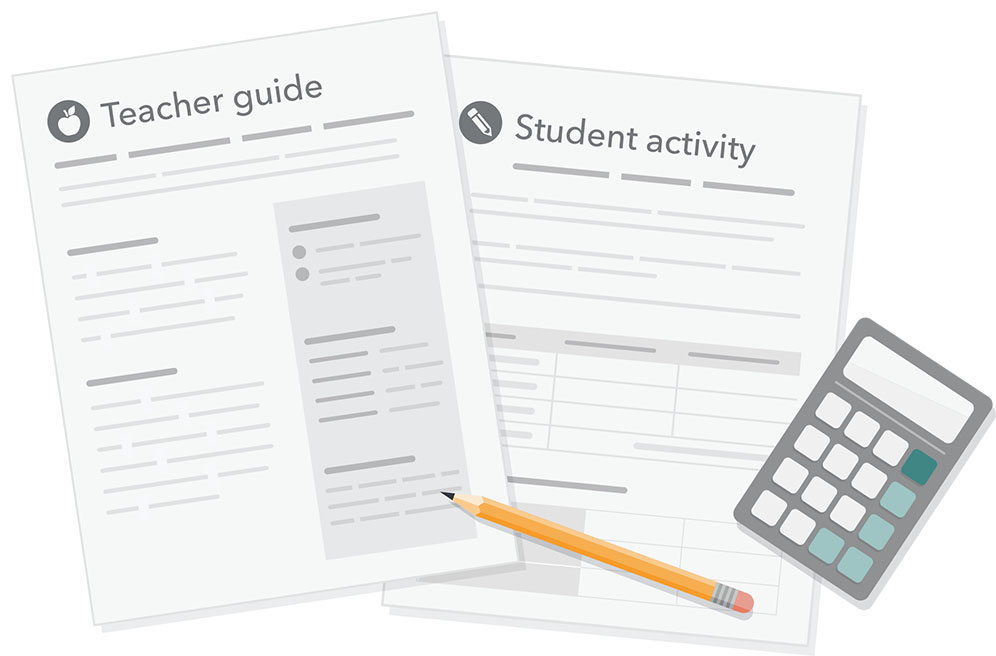Find financial literacy activities
Find activities that can help you teach and nurture the building blocks of financial capability across the curriculum.
These classroom activities can be completed within a single class period. Each activity comes with a teacher guide and supporting student material, so it’s easy to implement whether you’re an experienced personal finance teacher, integrating financial literacy into another subject area, or supplementing your existing financial education curriculum.

Search for activities
Comparing higher education choices
Ideal for: Middle school (6-8), High school (9-10), High school (11-12)
Students explore higher education options by comparing similarities and differences between two colleges near where they live.
Learning how federal financial aid can help you pay for higher education
Ideal for: High school (9-10), High school (11-12)
After watching a video describing basic types of federal financial aid, students answer content-based questions about financial planning for college.
Understanding how insurance works: A case study about Lucy
Ideal for: High school (9-10), High school (11-12)
Students read about how insurance works and then review a case study to see how insurance choices can affect personal finances for a young adult in a rural area.
Reflecting on what’s worth saving for
Ideal for: High school (9-10), High school (11-12)
Using the strategies of reflective writing, students create a personal statement sharing their hopes and dreams of things they would like to have or accomplish in the future.
Drawing your own savings comic strip
Ideal for: High school (9-10), High school (11-12)
Students identify an important lesson about saving money and create a comic strip reflecting that lesson.
Bouncing ball money choices
Ideal for: Middle school (6-8), High school (9-10), High school (11-12)
Students play a game to share how they think and feel about money.
Understanding who shapes your money decisions
Ideal for: Middle school (6-8), High school (9-10), High school (11-12)
Students read a handout and then identify how both they and the people in their lives make choices about money.
Investigating types of fraud and identity theft
Ideal for: High school (9-10), High school (11-12)
Students identify different types of fraud and identity theft in real-world scenarios.
Giving advice about consumer protection
Ideal for: High school (9-10), High school (11-12)
Students put their developing understanding of fraud and identity theft to use as they play the role of a consumer affairs advice columnist responding to letters from readers.
Speaking publicly about consumer financial protection rights
Ideal for: High school (9-10), High school (11-12)
Students research and write a speech focusing on a specific consumer right or consumer financial protection issue and related laws.
